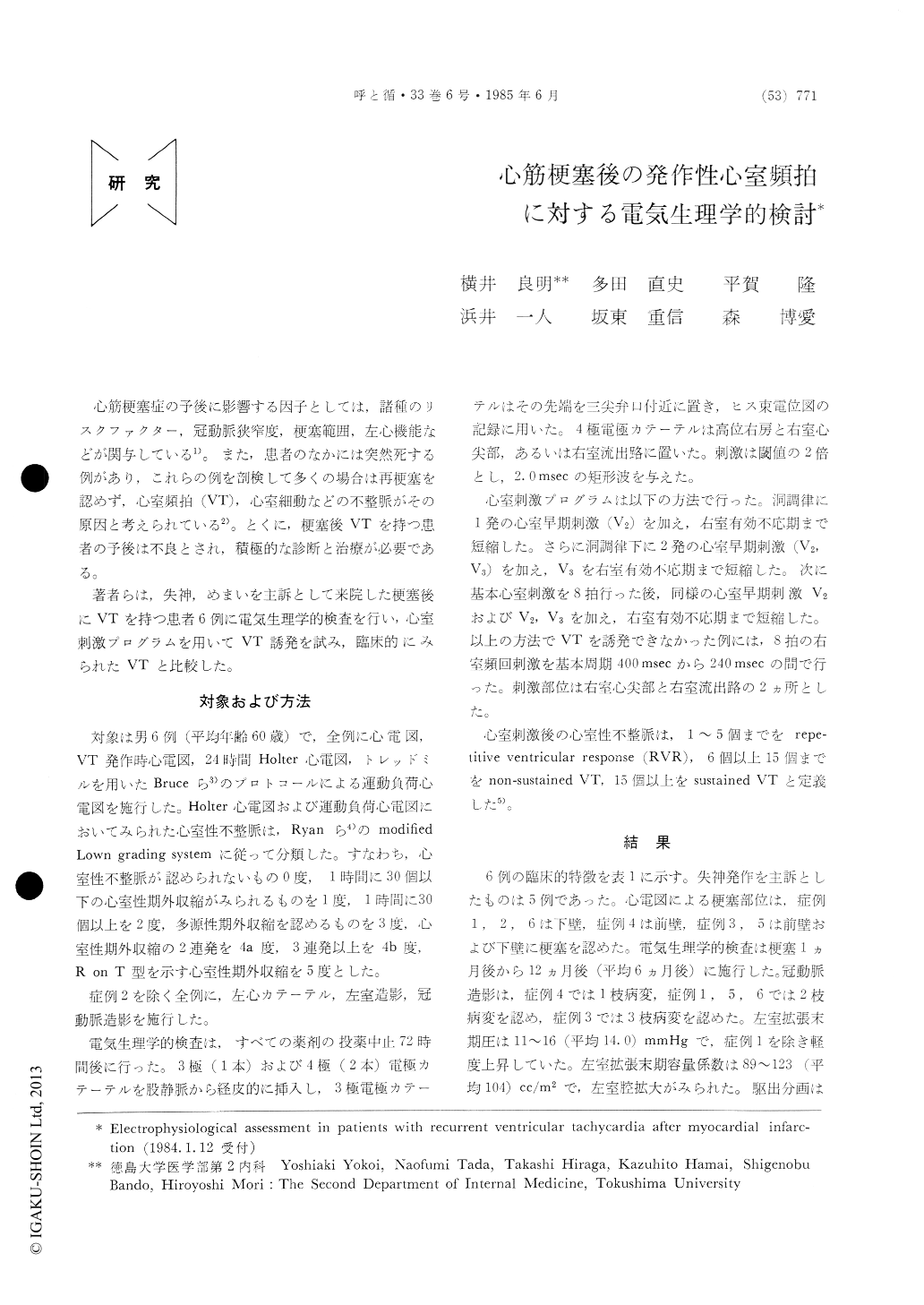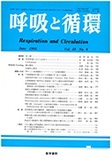Japanese
English
- 有料閲覧
- Abstract 文献概要
- 1ページ目 Look Inside
心筋梗塞症の予後に影響する因子としては,諸種のリスクファクター,冠動脈狭窄度,梗塞範囲,左心機能などが関与している1)。また,患者のなかには突然死する例があり,これらの例を剖検して多くの場合は再梗塞を認めず,心室頻拍(VT),心室細動などの不整脈がその原因と考えられている2)。とくに,梗塞後VTを持つ患者の予後は不良とされ,積極的な診断と治療が必要である。
著者らは,失神,めまいを主訴として来院した梗塞後にVTを持つ患者6例に電気生理学的検査を行い,心室刺激プログラムを用いてVT誘発を試み,臨床的にみられたVTと比較した。
Six patients with symptomatic ventricular tachy-cardia (VT) after myocardial infarction were inves-tigated. VT were identified in 3 (50%) by 24 hour Holter recording and 2 (33%) by exercise electro-cardiography. These patients underwent electro-physiological study and VT were induced by using programmed ventricular electrical stimulation in all patients (100%). The induction of VT were achieved in 3 patients by single extra ventricular stimulus after basic ventricular pacing and in 2 patients by rapid ventricular pacing. Sustained VT occurred in 3 patients. Single ventricular extra ventricular stimulus or rapid ventricular pacing successfully terminated sustained VT. The QRS configulation of induced VT were compared with clinical VT and were found to be the same.
It is concluded that 1) programmed ventricular stimulation for paroxymal VT after myocardial infarction were useful in those patients with rare occurrence of tachycardia attack, 2) induced VT showed similar QRS configulation to clinical VT and 3) drug efficasy and patients prognosis could be assessed by induced VT.

Copyright © 1985, Igaku-Shoin Ltd. All rights reserved.


